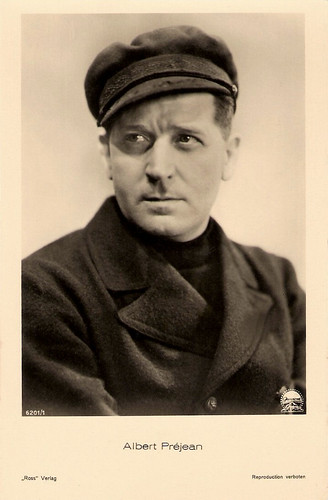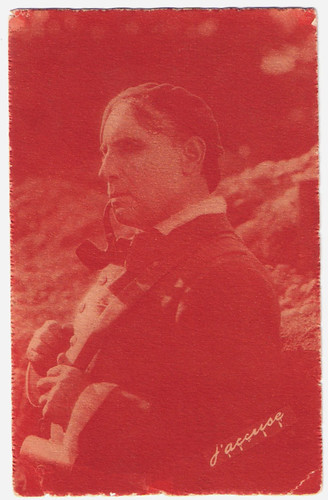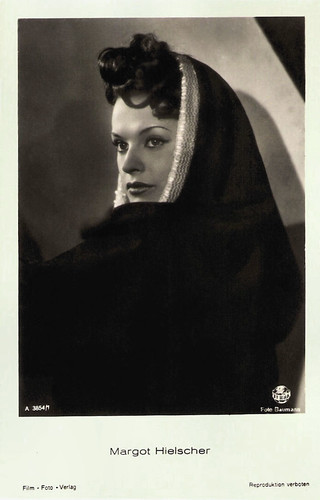On 25 April, Italian stage and film actress Anna Proclemer (1923-2013) has passed away at the age of 89. She is known internationally for her role of the prostitute in Viaggio in Italia (Roberto Rossellini, 1954) opposite Ingrid Bergman. In her own country she was famous as a stage animal who had worked with the giants of the Italian theatre.
![Anna Proclemer (1923-2013)]()
Italian postcard by Bromostampa, Milano, no. 337.
Rediscovered as a Masterpiece
Anna Proclemer was born in Trento, Italy in 1923. She was the daughter of an engineer and a housewife. In 1941, she made her stage debut at the Rome University Theatre with the play Nostra Dea (Our Goddess) by Massimo Bontempelli and directed by Turi Vasile. A year later, she made her film debut in Giorno di nozze/Wedding Day (Raffaello Matarazzo, 1942) as the daughter of Armando Falconi. She also appeared in the sequel, Il Birichino di Papa/Daddy's Little Devil (Raffaello Matarazzo, 1943). In these comedies she was credited as Anna Vivaldi. After the war she was top-billed in Malia (Giuseppe Amato, 1946) with Maria Denis. In 1946 Proclemer married the writer Vitaliano Brancati, with whom she had a daughter, the later actress/agent Antonia Brancati (1947). They separated shortly before his death in 1954. Internationally, Proclemer became known for her part of the prostitute in the film Viaggio in Italia/Voyage in Italy (Roberto Rossellini, 1954) opposite Ingrid Bergman. Viaggio in Italia was unsuccessful when it was originally released, but years later it was rediscovered as a masterpiece by the French critics of Cahiers du Cinema. However, Proclemer would play in only 15 films during her long career, but she did often work as a voice actress. She dubbed Greta Garbo and Anne Bancroft, and was the Italian voice of the Greek Yvonne Sanson in the melodrama Catene/Chains (Raffaello Matarazzo, 1949) and the Anglo-Austrian Tamara Reed in the comedy Vita da cani/A Dog's Life (Mario Monicelli, Steno, 1950). From the late-1950s on, Proclemer also performed for TV.
Scene from Viaggio in Italia (1954) with Ingrid Bergman and George Sanders. Source: Anmili (YouTube).
Searing Presence and Powerful Voice
Anna Proclemer was primarily a theatre actress. Graham Spicer at his blog Gramilano describes her as: “a stage animal with a searing presence and powerful voice, allowing her to dominate every stage she stood on. She was a larger-than-life actress, the like of which doesn’t really exist today: a true star.” From 1952 to 1955 Proclemer worked on stage for the Compagnia Teatro d’Arte Italiano, directed by Vittorio Gassman and Luigi Squarzina. She played Gassmann’s Ophelia in 1952, and was also memorable as Jocasta in Sophocles’ Oedipus Rex, a role she would play three times. She was directed by another giant of the Italian theatre, Giorgio Strehler, at the Piccolo Teatro of Milan. From 1956 on, she worked extensively with Giorgio Albertazzi, who would become her life partner too. During the 1970s, she made a come-back in the cinema. Her films include the thriller Orgasmo/Paranoia (Umberto Lenzi, 1970) starring Carroll Baker, the political thriller Cadaveri eccellenti/Illustrious Corpses (Francesco Rosi, 1976) with Lino Ventura, and the failure A Matter of Time/Nina (Vincente Minnelli, 1976) starring Liza Minelli. Decades later, Proclamer appeared in the film comedy No Problem (Vincenzo Salemme, 2008). A year earlier she had appeared in stage at La Scala as Duchesse von Crackentorp in Franco Zeffirelli’s La fille du regiment (2007). Her final film part was in the modern ghost story Magnifica Presenza/Magnificent Presence (Ferzan Özpetek, 2012) starring Elio Germano. For this role Anna Proclemer was awarded with a special Globo d'oro in 2012. A beautiful end of a seventy-year career.
Trailer for Magnifica Presenza/Magnificent Presence (2012). Source: FilmFestivalVideos (YouTube).
Sources: Graham Spicer (Gramilano), Hans Beerekamp (Het Schimmenrijk) (Dutch), AllMovie, Wikipedia (English and Italian), and IMDb.

Italian postcard by Bromostampa, Milano, no. 337.
Rediscovered as a Masterpiece
Anna Proclemer was born in Trento, Italy in 1923. She was the daughter of an engineer and a housewife. In 1941, she made her stage debut at the Rome University Theatre with the play Nostra Dea (Our Goddess) by Massimo Bontempelli and directed by Turi Vasile. A year later, she made her film debut in Giorno di nozze/Wedding Day (Raffaello Matarazzo, 1942) as the daughter of Armando Falconi. She also appeared in the sequel, Il Birichino di Papa/Daddy's Little Devil (Raffaello Matarazzo, 1943). In these comedies she was credited as Anna Vivaldi. After the war she was top-billed in Malia (Giuseppe Amato, 1946) with Maria Denis. In 1946 Proclemer married the writer Vitaliano Brancati, with whom she had a daughter, the later actress/agent Antonia Brancati (1947). They separated shortly before his death in 1954. Internationally, Proclemer became known for her part of the prostitute in the film Viaggio in Italia/Voyage in Italy (Roberto Rossellini, 1954) opposite Ingrid Bergman. Viaggio in Italia was unsuccessful when it was originally released, but years later it was rediscovered as a masterpiece by the French critics of Cahiers du Cinema. However, Proclemer would play in only 15 films during her long career, but she did often work as a voice actress. She dubbed Greta Garbo and Anne Bancroft, and was the Italian voice of the Greek Yvonne Sanson in the melodrama Catene/Chains (Raffaello Matarazzo, 1949) and the Anglo-Austrian Tamara Reed in the comedy Vita da cani/A Dog's Life (Mario Monicelli, Steno, 1950). From the late-1950s on, Proclemer also performed for TV.
Scene from Viaggio in Italia (1954) with Ingrid Bergman and George Sanders. Source: Anmili (YouTube).
Searing Presence and Powerful Voice
Anna Proclemer was primarily a theatre actress. Graham Spicer at his blog Gramilano describes her as: “a stage animal with a searing presence and powerful voice, allowing her to dominate every stage she stood on. She was a larger-than-life actress, the like of which doesn’t really exist today: a true star.” From 1952 to 1955 Proclemer worked on stage for the Compagnia Teatro d’Arte Italiano, directed by Vittorio Gassman and Luigi Squarzina. She played Gassmann’s Ophelia in 1952, and was also memorable as Jocasta in Sophocles’ Oedipus Rex, a role she would play three times. She was directed by another giant of the Italian theatre, Giorgio Strehler, at the Piccolo Teatro of Milan. From 1956 on, she worked extensively with Giorgio Albertazzi, who would become her life partner too. During the 1970s, she made a come-back in the cinema. Her films include the thriller Orgasmo/Paranoia (Umberto Lenzi, 1970) starring Carroll Baker, the political thriller Cadaveri eccellenti/Illustrious Corpses (Francesco Rosi, 1976) with Lino Ventura, and the failure A Matter of Time/Nina (Vincente Minnelli, 1976) starring Liza Minelli. Decades later, Proclamer appeared in the film comedy No Problem (Vincenzo Salemme, 2008). A year earlier she had appeared in stage at La Scala as Duchesse von Crackentorp in Franco Zeffirelli’s La fille du regiment (2007). Her final film part was in the modern ghost story Magnifica Presenza/Magnificent Presence (Ferzan Özpetek, 2012) starring Elio Germano. For this role Anna Proclemer was awarded with a special Globo d'oro in 2012. A beautiful end of a seventy-year career.
Trailer for Magnifica Presenza/Magnificent Presence (2012). Source: FilmFestivalVideos (YouTube).
Sources: Graham Spicer (Gramilano), Hans Beerekamp (Het Schimmenrijk) (Dutch), AllMovie, Wikipedia (English and Italian), and IMDb.





































































































